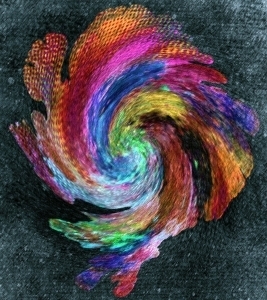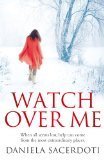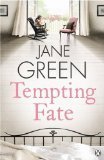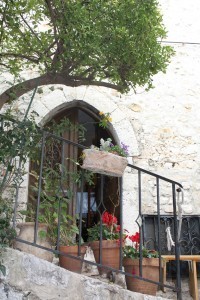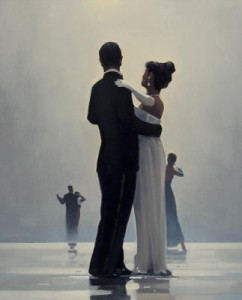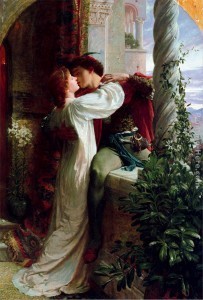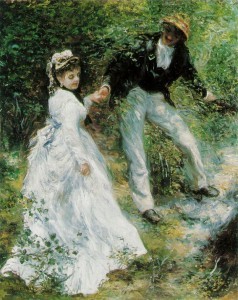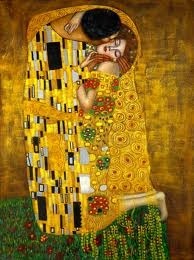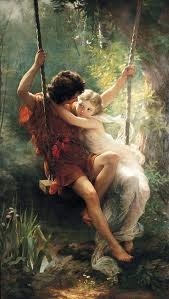Hannah Fielding's Blog, page 124
August 22, 2013
One of my favourite writing places
August 20, 2013
A peek into the world of my upcoming novel: The Venice Biennale, Part 1
I’m delighted to announce that my next novel, The Echoes of Love, will be published in November. I can reveal that the love story is set predominantly in Venice, Italy, so to introduce this wonderful place I’d like to start by looking at the Venice Biennale.
The Biennale is a huge, multi-million-pound contemporary art event that is modelled on the World Fair. It is held every other year in Venice. It attracts more than 300,000 visitors and incorporates:
The Venice Film Festival – the oldest film festival in the world
The Venice Biennale of Architecture
The International Festival of Contemporary Dance
The Biennale is based in the Giardini park. There, the themed exhibition curated by the Biennale’s director is displayed in a large exhibition hall known as the central pavilion. Other national pavilions are also located in the park, thirty in total. Countries that do not own a pavilion exhibit in other places in the city.
History of the Biennale
The Biennale began way back in 1895, at which point decorative arts were the focus. But over time the Biennale attracted more interest abroad, and by 1907 countries had installed pavilions at the exhibition. After the First World War, the Biennale was one of the few events worldwide providing a platform for modern art, and many modern artists exhibited their works at the Biennale.
The 1930s saw the introduction of new sections of the event – the Music Festival, the International Film Festival and the Theatre Festival – and the introduction of prizes awarded to artists. The event was cancelled during the Second World War, but it returned with vigour in 1948, pioneering coverage for avant-garde and modern artists. Indeed, come the 1950s abstract expressionism was on show at the Biennale, and the event was the first to bring pop art to widespread attention by awarding a prize to artist Robert Rauschenberg in 1964.
In 1968, the event shifted from having a commercial edge to being entirely a platform for exhibition and exploration. Until that point, artists had used the Biennale to find buyers for their works, and the Biennale had acted as a gallery, taking a commission for arranging the sales.
Always keeping pace with, if not leading, change, in the late 1960s and ’70s themes were explored, and in 1972 the entire event was devoted to Chile in cultural protest of the dictatorship of Pinochet. In the remaining years of the 1970s postmodern art was exhibited, and then in 1980 a new section of the exhibition was created devoted to emerging art.
In recent years, the organisers of the event (each has an artistic director/curator, who can be from any country) have focused on bringing in as wide a representation as possible of artists from across the world and from all walks of life.
[to be continued next week…]
August 18, 2013
Romance matters
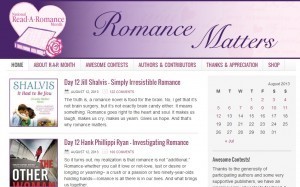 Recently, I blogged about Read a Romance Month, whose central focus is asking a wealth of romance novelists why romance matters. I’ve been reading with great interest what authors have to say on the subject there.
Recently, I blogged about Read a Romance Month, whose central focus is asking a wealth of romance novelists why romance matters. I’ve been reading with great interest what authors have to say on the subject there.
Susan Mallery argues that feminism and romance authorship are not mutually exclusive. She explains that romance novels empower readers in two ways: ‘teach women that we can do and be anything’ and ‘teach women how we deserve to be treated by the men in our lives’. Julia London points out what a major influence romance has been on world history. Joyce Lamb makes sensible points on the role of romance novels in teaching conflict resolution. Nina Rowan focuses on the role of discovery and courage in romance. Barbara Delinsky talks about the characters as people we like – in a world of fiction full of characters with whom it is hard to identify. Beth Kendrick says, ‘Every time I reads the last page of a great romance, I feel a subversive little thrill, because the author and I know the truth: love really IS the meaning of life. Elizabeth Hoyt explains beautifully:
I read romance because I believe there is more to humanity than eating and sleeping and work. There is the spirit and the imagination and they must be fed in order that they not wither and die. There is adventure and humor and love and when I read romance books I remember the best there is of life and people and I close the book with a smile on my face and joy in my heart.
Exploring the issue of ‘why romance matters’ is really an attempt to break down the stigma associated with reading (and writing) romance novels. As Mary Balogh says, ‘We all know that the romance genre occupies the lowest rung of respectability among all literary genres.’ Some authors report that their readers say their books are a ‘secret’ or ‘guilty’ pleasure, and that they read them secretly. Why? Because there’s a degree of shame associated with the genre. Indeed, a recent USA Today article explored the subject of why people tell romance authors ‘When are you going to write a real book?’, and the authors failed to discover what exactly constitutes this mystical ‘real book’.
But the responses on the Read a Romance Month website indicate clearly that there is a place for romance in the literary arena, and it’s about time that those who write and read romance were given more respect. From fellow authors. From fellow readers. And especially from the literary elite and the publishing industry, for as a romance editor at a large publishing house told USA Today:
The fact of the matter is that romance is like 50% of the paperback market. Everybody who works in commercial publishing knows that. So among the people that I work with, we have nothing but respect for romance because we very much know that it’s keeping the lights on.
There are many, many more inspirational articles on the website, and if, like me, you believe that romance matters, I heartily recommend going through them. You’ll feel comforted, empowered and inspired by the discussions there, and will come away armed and ready to be a romantic and proud. And you’ll find lots of recommendations for new romance novels to try. What better way to spend a half hour?
August 16, 2013
Book review: Watch Over Me by Daniela Sacerdoti
From the blurb:
Eilidh Lawson’s life has hit crisis point. Years of failed fertility treatments, a cheating husband and an oppressive family have pushed her to the limit. Desperate for relief, Eilidh seeks solace in the only place she’s ever felt at home – a small village in the Scottish Highlands. There, Eilidh slowly begins to mend her broken heart but soon learns she is not the only one in the village struggling to recover from a painful past.
Jamie McAnena, Eilidh’s childhood friend, is trying to raise his daughter Maisie alone. After Maisie’s mother left to pursue a career in London and Jamie’s own mother, Elizabeth, passed away, he has resigned himself to being a family of two.
But sometimes there is more to a story than meets the eye. Despite their reluctance, curious circumstances keep bringing Jamie and Eilidh together. For even when it seems all is lost, help can come from the most surprising places.
An ethereal and beautifully written debut novel, Watch Over Me is a poignant story about letting go and moving on – with a little bit of help from beyond the grave.
I bought this book for three reasons:
The title, which has that warmth and romance I like.
The cover, whose colours drew me in.
The blurb, which suggested it’s a heart-warming story.
The price! At £0.30 for the Kindle copy, it seemed ridiculous not to give this book a try.
Clearly, the publisher is exploring a marketing angle with this book, and the pricing has certainly paid off judging by the 1,409 reviews to date on Amazon, the vast majority of which are positive. And quite right, I think.
I really enjoyed this book. The beginning I found to be quite dark – necessary for appreciation of the later light – and overall I found the story to be profoundly moving, and one that stayed with me long after I finished the book.
I do not usually read romances with a paranormal edge, but in this the content is subtle and very much supports the plot development. It contributes greatly to the poignancy of the book, and I think whatever your beliefs, it could not offend.
The love story is realistic, and I loved the caution the author took in moving the lead characters along their journey, which felt right for the circumstances. And I was delighted by the ending – just right for the book.
I loved the Highlands setting for the book, and the cultural references. Indeed, following one I found myself looking up the poem ‘Hallaig’ on the internet and discovering a beautiful work I’d never read before.
The ideal reader for this book is, I think, a romantic at heart, and someone who enjoys a book that really explores emotional issues with maturity. It’s also a wonderful book on motherhood, and the meaning of family.
Definitely one to add to your ‘to read’ list, and, if you’re a Kindle owner, to grab for your bookshelf during its low-price promotion!
Watch Over Me is available now from Amazon; click on the book cover below to visit the store.
August 15, 2013
A bird’s eye view
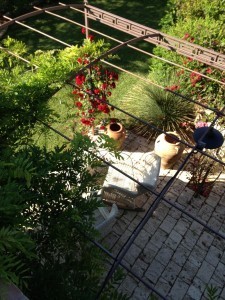 The patio outside my study where I sometimes write in the late afternoons when the sun is not too bright.
The patio outside my study where I sometimes write in the late afternoons when the sun is not too bright.
August 13, 2013
Burning Embers, the movie: My ideal leads
Recently, and interviewer asked me a fun question: If Burning Embers was optioned for a TV drama/movie, who would you like to play Coral and Rafe?
Of course, every author delights in the idea of a play or motion picture made of their work. When we write, we are so invested in the story and the characters, and the scenes are so vivid in our minds, that it feels we are watching the action as if on a stage or screen and narrating what we experience. It’s fun to dream – of the location shooting in Kenya, of the premiere (what better excuse to wear a stunning dress!) and, of course, of the leading man in particular…
Had I answered the question years ago, when I first conceived the idea for the novel, I’d have picked classic actors for the parts. After all, when I wrote Coral, the heroine, I had in mind the model Twiggy, who was so popular for the era in which the book is set (1970).
But in fact, the actors must be modern to appeal to the current audience. What fun I had thinking about whom I would cast in the roles!
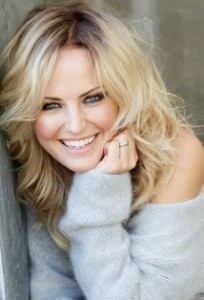 The heroine, I knew, must be beautiful but spirited; strong but still feminine; intelligent and passionate; able to convince a viewer that she is innocent. She must be credible in her roles as both naïve young lady and blossoming, sexually-kindled woman. She must be able to command the male lead’s attention and affection, and appear to be his equal on screen, while not being so ethereally beautiful or delicate that a female viewer could not identify with her. Malin Akerman has just the right look for the part, and from the roles I’ve seen her play in movies, I think she could perfectly convey Coral as a girl becoming a woman. I loved her in 27 Dresses and The Proposal.
The heroine, I knew, must be beautiful but spirited; strong but still feminine; intelligent and passionate; able to convince a viewer that she is innocent. She must be credible in her roles as both naïve young lady and blossoming, sexually-kindled woman. She must be able to command the male lead’s attention and affection, and appear to be his equal on screen, while not being so ethereally beautiful or delicate that a female viewer could not identify with her. Malin Akerman has just the right look for the part, and from the roles I’ve seen her play in movies, I think she could perfectly convey Coral as a girl becoming a woman. I loved her in 27 Dresses and The Proposal.
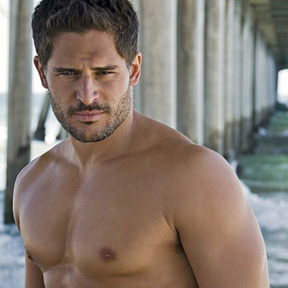 Even more fun is considering the male lead. First and foremost, he must be attractive. He does not have to be a beautiful man; indeed, sometimes the most appealing leads aren’t. But he must exude magnetism, be eminently male with an edge of machismo, and physique matters. More important than looks, though, is character – which shines through appearance to make for a truly knee-melting hero. He must have charisma; he must be the kind of man who, when he enters a room, has such a commanding presence that you can’t help but look his way. He must have principles, confidence, strength of character. He must have wit – an easy smile. He must be kind, and compassionate. But above all else, he must be passion incarnate! Perfectly fitting the bill, in my opinion, is Joe Manganiello, who has proved beyond a shadow of a doubt in hit US show True Blood that he is a most attractive hero indeed (no wonder he is rumoured to have been cast as the next Batman).
Even more fun is considering the male lead. First and foremost, he must be attractive. He does not have to be a beautiful man; indeed, sometimes the most appealing leads aren’t. But he must exude magnetism, be eminently male with an edge of machismo, and physique matters. More important than looks, though, is character – which shines through appearance to make for a truly knee-melting hero. He must have charisma; he must be the kind of man who, when he enters a room, has such a commanding presence that you can’t help but look his way. He must have principles, confidence, strength of character. He must have wit – an easy smile. He must be kind, and compassionate. But above all else, he must be passion incarnate! Perfectly fitting the bill, in my opinion, is Joe Manganiello, who has proved beyond a shadow of a doubt in hit US show True Blood that he is a most attractive hero indeed (no wonder he is rumoured to have been cast as the next Batman).
What do you think? Would you go to the movie theatre to watch a love story between these two characters? What do you think is important in a hero and heroine casting? I would love to hear your thoughts.
August 11, 2013
Favourite film: Letters to Juliet
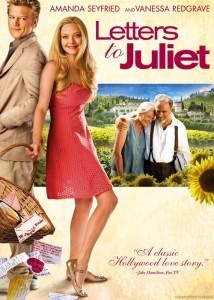 The ultimate feel-good romantic film. I defy anyone to watch this without misting up at least once!
The ultimate feel-good romantic film. I defy anyone to watch this without misting up at least once!
Sophie (Amanda Seyfried) and her passionate Italian chef fiancé Victor have come to Verona, Italy, for a ‘pre-honeymoon’. Only, lovely as he is, Victor is more interested in sourcing Italian supplies for his new restaurant than spending time with Sophie. Left to her own devices, Sophie stumbles across Juliet Capulet’s courtyard. There, beneath Juliet’s balcony, women pin letters to Juliet, asking for advice on all matters romantic. And there, Juliet discovers a sisterhood exists, called the secretaries of Juliet, who diligently answer letters in Juliet’s name each day.
Joining them, Sophie discovers this letter, left in a crack in the wall many years ago:
I didn’t go to him, Juliet. I didn’t go to Lorenzo. His eyes were so full of trust. I promised I’d meet him and run away together because my parents don’t approve. But, instead, I left him waiting for me below our tree, waiting and wondering where I was. I’m in Verona now. I return to London in the morning and I am so afraid. Please, Juliet tell me what I should do. My heart is breaking, and I have no one else to turn to. Love, Claire
She responds, and to her surprise a week later Claire (Vanessa Redgrave) herself arrives, an old English lady, with her over-protective and, apparently, unromantic grandson Charlie (Christopher Egan) in tow. What follows is a quest, led by Claire and followed by a fascinated Sophie and most reluctant Charlie, to find the long-lost Lorenzo. Fact-checker Claire has traced several in the area, and one by one the threesome travel across Italy in an attempt to reunite the estranged lovers. It’s a journey full of learning for all three of them, during which all manner of locked-away passions are released.
There is so much to love in this film. The dialogue is both witty and moving. The characters are played superbly, and are likeable and attractive. The story is wonderful – with the very happiest of endings. But for me, several things set this movie apart:
The setting
The cityscapes and rural country landscapes are simply stunning. After watching the film, I find myself yearning to book a plane ticket…
The Juliet connection
I love the Romeo and Juliet connotations in the film – not overdone, but really adding to the romance factor. I also love the concept of the letters to Juliet. What a lovely means of self-expression, and how generous of the secretaries to help so many women.
The writing connection
Sophie is a professional fact checker, but she dreams of being a writer. And during the course of the film, that dream is realised. Most heart-warming for a fellow writer.
The romance
Ah, the romance! At both levels – Sophie and Charlie, and Claire and Lorenzo – this love story is deeply affecting. There is much meaning conveyed surrounding what love means: that it has no expiration date; that when you love someone, you’re meant to want to be with them all the time (unlike Victor and Sophie); that it’s never too late; that finding love requires courage. One of my favourite lines in the film is by Charlie; he says of Juliet: I would have grabbed her from that blasted balcony and been done with it.
But the part that always has me sighing is the reading, at the end, of Sophie’s letter to Claire – that fateful letter:
Dear Claire, “What” and “If” are two words as non-threatening as words can be. But put them together side-by-side and they have the power to haunt you for the rest of your life: What if? What if? What if? I don’t know how your story ended but if what you felt then was true love, then it’s never too late. If it was true then, why wouldn’t it be true now? You need only the courage to follow your heart. I don’t know what a love like Juliet’s feels like: love to leave loved ones for, love to cross oceans for, but I’d like to believe if I ever were to feel it, that I’d have the courage to seize it. And Claire, if you didn’t, I hope one day that you will. All my love, Juliet
Simply beautiful!
August 9, 2013
Book review: Tempting Fate by Jane Green
From the blurb:
When Gabby first met Elliott she knew he was the man for her. In twenty years of marriage she has never doubted her love for him – even when he refused to give her the one thing she still wants most of all. But now their two daughters are growing up Gabby feels that time and her youth are slipping away. For the first time in her life she is restless. And then she meets Matt . . .
Intoxicated by the way this young, handsome and successful man makes her feel, Gabby is momentarily blind to what she stands to lose on this dangerous path. And in one reckless moment she destroys all that she holds dear.
Consumed by regret, Gabby does everything she can to repair the home she has broken. But are some betrayals too great to forgive?
Gabby is having a mid-life crisis. She loves her husband, but has itchy feet:
I am a doctor’s wife, she thinks. Which is exactly what it sounds like. Stable. Safe. And just a tiny bit dull. Briefly, she indulges in a fantasy. What if she were a dot-com billionaire’s wife?
When she meets Matt – the dot-com billionaire – she develops something of an obsession for him. She tells herself it’s okay, but of course she’d never have an affair. And yet she does, and the results of just one intimate moment together destroy her family.
I was delighted to receive an advanced proof of this book from the publisher, having read and enjoyed bestselling women’s fiction author Jane Green before. I found this to be an intelligent, thought-provoking, true-to-life book. Amid Gabby’s story, there’s a lot of commentary about adultery and divorce and what it means to be a wife, a mother, and a woman of a certain age.
It’s a book that depicts an emotional journey – don’t expect a packed, twisting plot with lots of action, but instead plenty of exploration of feelings. There’s also some quite down-to-earth erotic content that allies with Gabby’s need to be outside of her usual, safe realm:
Gabby is no longer a forty-three-year-old housewife, no longer a mother, no longer dull, well into middle-age. She is thirty, twenty, eighteen. She is wild and ferocious. She doesn’t care about stretch marks , or sags, or pouches; she cares only about pleasure, giving and receiving more pleasure than she had thought possible.
My one struggle in the book was with the character of Gaby. After her affair, when she realises the mistake, I found it easier to like her and empathise with her. But before, when she’s rushing headlong into it all the while protesting loudly that she’s still a loyal wife and a good mother (despite the fact she’s rather inconsistent in her approach to her children, partly adoring them, partly wanting to keep out of their lives), I was uncomfortable in the reading. But I think that’s exactly the point – exactly how the reader is meant to feel. Without worrying about Gaby at the start, we can’t celebrate with her at the end when she is wiser and more appreciative of what she has; when she finally accepts, as her mother tells her:
We are exactly where we need to be.
A wonderful read, especially for those women with experience of marriage and children. And without wishing to spoil the read, if you’re put off this book because you think it will be depressing with a sad ending, don’t be.
Tempting Fate is available now from Amazon; click on the book cover below to visit the store.
August 8, 2013
Off the beaten track in France
August 6, 2013
Five of the most romantic artworks
I love art, and I find it deeply inspirational for my writing. Because I write romance, I find special meaning in romantic works. Here are some of my favourites. I would love to hear your opinion.
Dance Me To The End Of Love: Jack Vettriano (1951-)
Romeo and Juliet: Frank Dicksee (1853-1928)
The Promenade: Pierre-Auguste Renoir (1841-1919)
The Kiss: Gustav Klimt (1862–1918)
Springtime: Pierre Auguste Cot (1837 – 1883)



